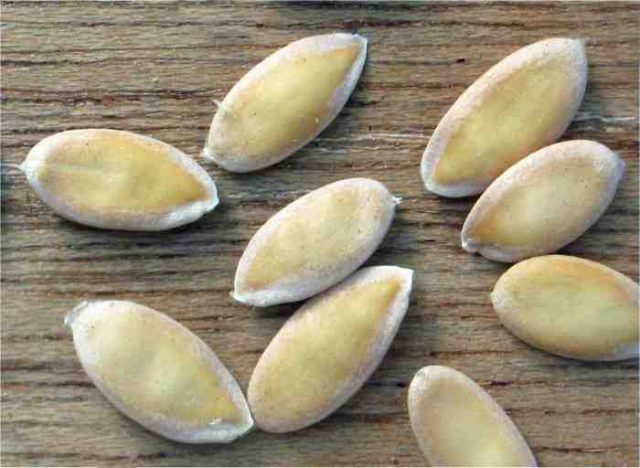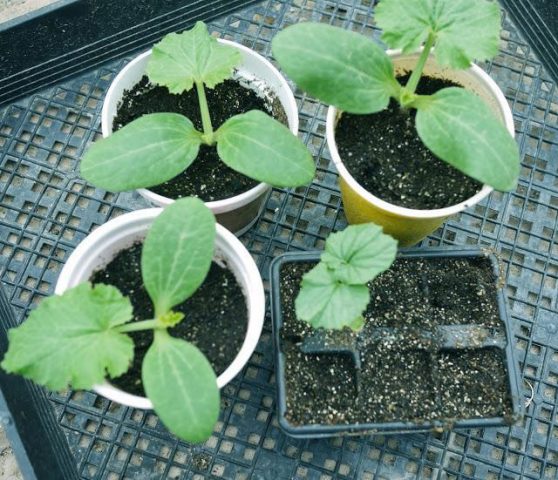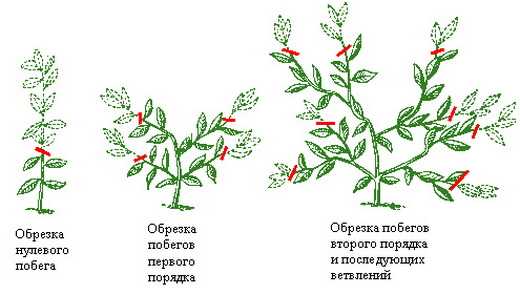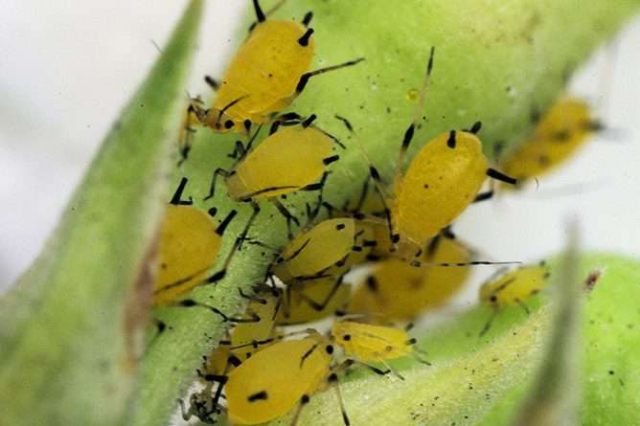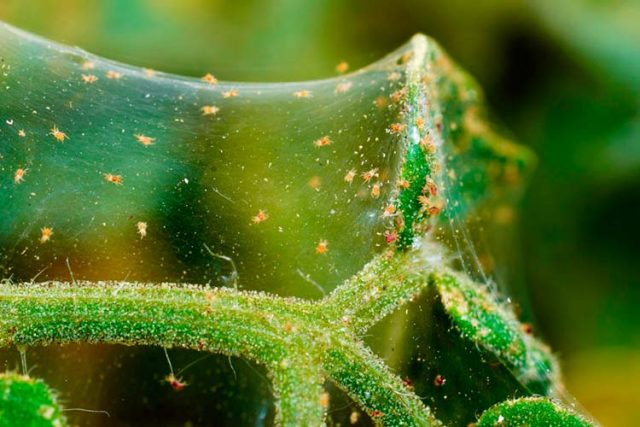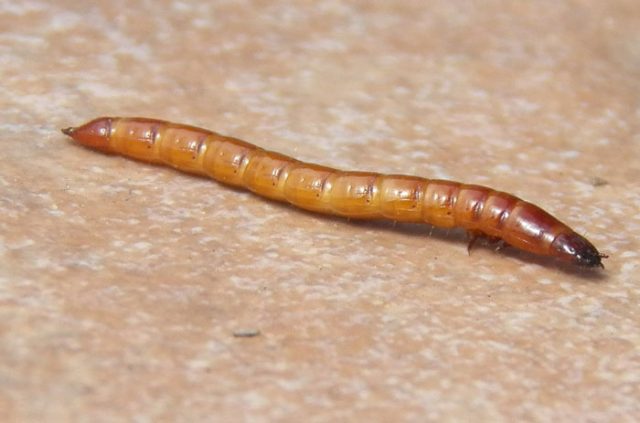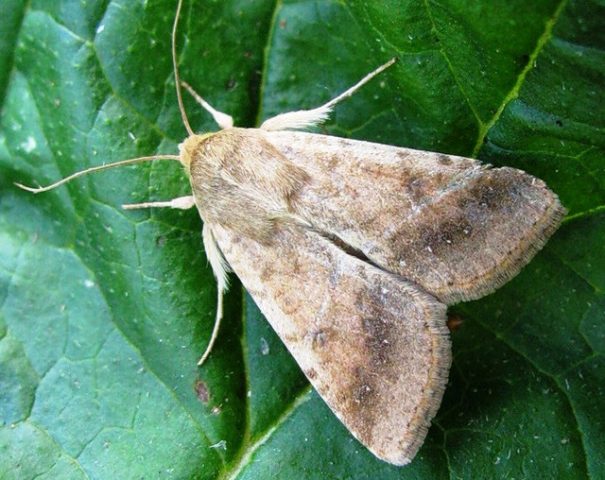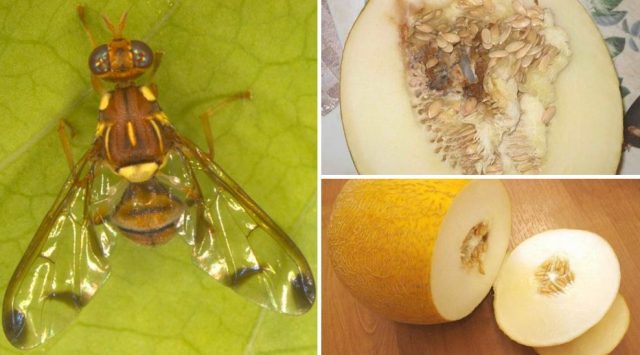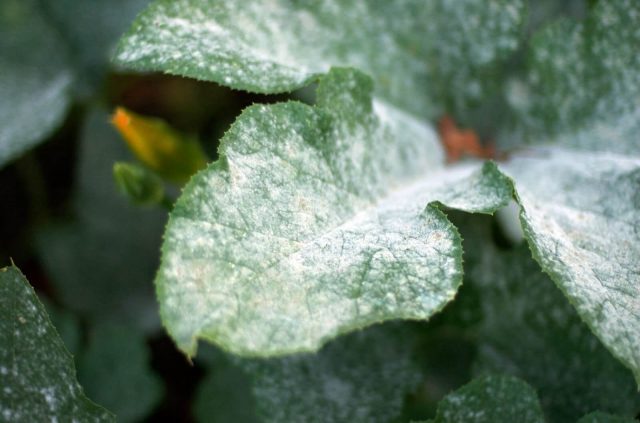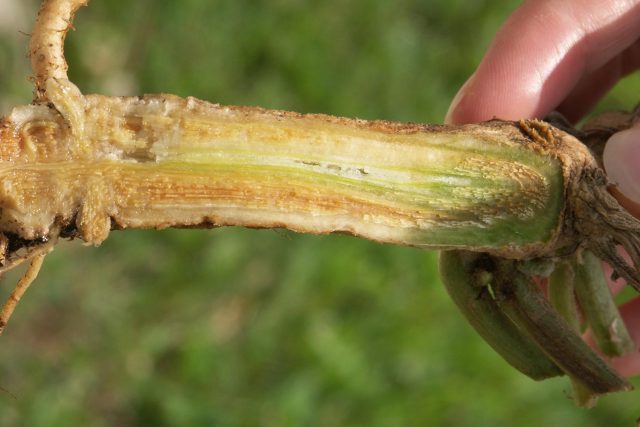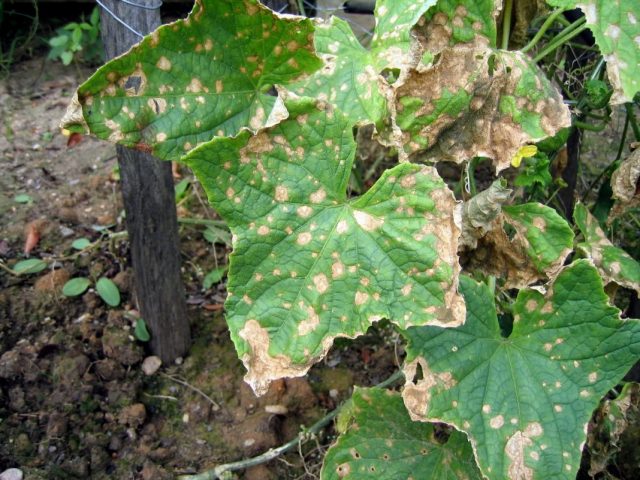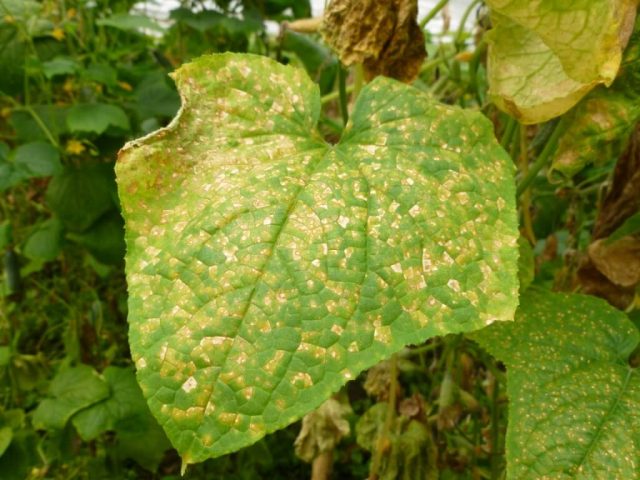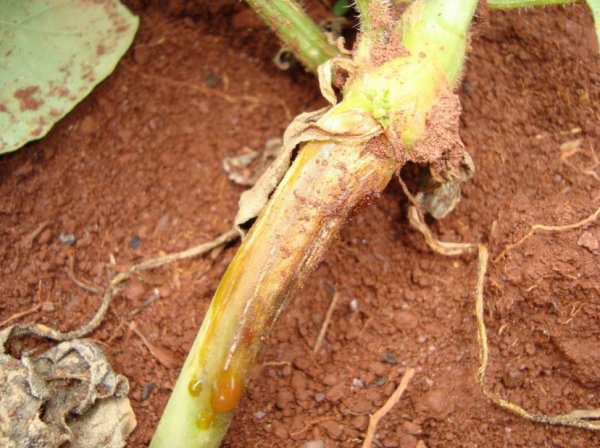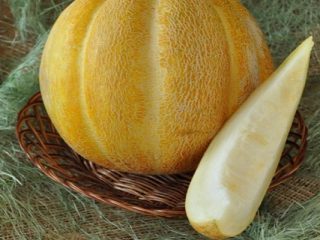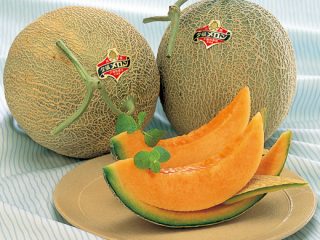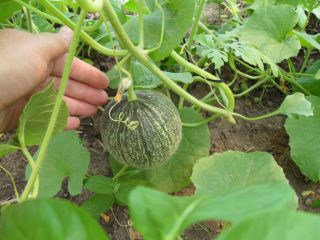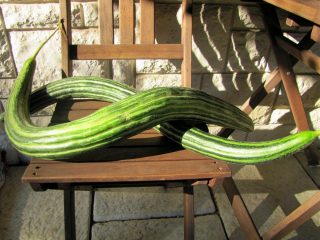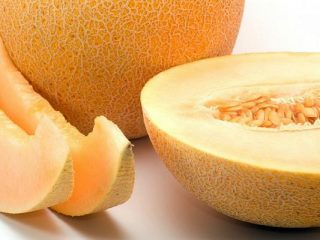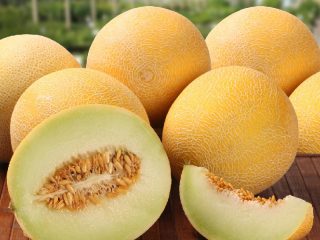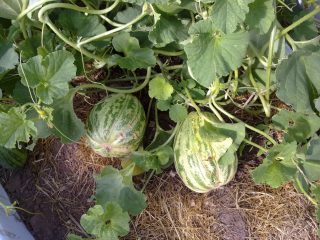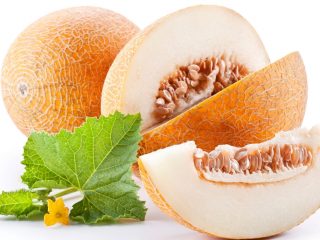Content
Melons and melons are loved by adults and children for their sweet, rich taste. Reviews of the Vietnamese melon Gift from Ho Chi Minh Grandfather are positive, but sometimes gardeners are upset by poor yields associated with improper care. Growing fruits, watering, fertilizing, and formation are described in the article.
Description of Vietnamese melon Gift from grandfather Ho Chi Minh
The plant belongs to the Pumpkin family, and the birthplace of the variety is indeed Vietnam. Initially, the culture was widespread in Central and Asia Minor, then spread to other regions. The Vietnamese melon variety Grandfather's Gift from Ho Chi Minh City is an early ripening variety for cultivation in open ground and greenhouse conditions.
Long and abundant fruiting allows you to get from each bush up to 30 medium-sized specimens of oval, sometimes round shape, weighing 100 - 200 g each. The pulp of the Vietnamese melon, Gift from Ho Chi Minh City’s grandfather, is fragrant, juicy, delicately oily, with a slight aftertaste of pineapple, which is why the variety called pineapple.Ripe fruits are dark orange or brown in color with light yellow stripes evenly distributed throughout the peel.
The appearance of the fruit can be assessed from a photo of a Vietnamese melon:
Pros and cons of the variety
Among the shortcomings, only the size of the fruit stands out. The Vietnamese melon, Gift from Ho Chi Minh City’s grandfather, has more advantages:
- ease of care: all processes are well known to gardeners;
- high taste qualities;
- decorative appearance;
- good yield;
- short growing season;
- resistance to temperature changes;
- immunity to many diseases.
How to grow Vietnamese melon
The small-fruited sugar plant loves well-lit places. If you choose the right planting site, the yield will increase significantly even with temperature changes. This is also facilitated by the independent pollination of female flowers of the Vietnamese melon, a gift from Ho Chi Minh City’s grandfather. To do this, the male flower is picked, the petals are torn off, and the dust particles are pressed against the pistil.
To prevent the fruits from rotting, place boards, pieces of plastic or other objects under them that will prevent the filling melons from touching the surface of the soil. It is not recommended to touch the fruits further to avoid damage. Grown in a greenhouse, the Vietnamese melon Grandfather's Gift from Ho Chi Minh City will be the same as in the open ground.
Seed preparation
It is not recommended to choose one-year seeding material - it will produce few female flowers, which will affect the number of ovaries and yield. Three-year-old seeds are the most suitable - they are sorted and the largest ones are selected. For a good harvest, gardeners recommend treating the seed with microelements.
In regions with cold climates, it is not recommended to plant unhardened Vietnamese milkmelon seeds. To gain resistance to temperature changes, they should be placed in a cool, bright place for 2 - 3 days before soaking. Seeds of the Ho Chi Minh City Grandfather's Gift variety are poured with a weak solution of potassium permanganate to protect against pests, swelling, and also to identify bad specimens. The seed should remain in the liquid for at least a day.
Preparing seedlings
Vietnamese melon Grandfather's Gift Ho Chi Minh City, like any other variety of this plant, does not respond well to transplantation, so it is recommended to germinate the seeds in peat pots: such containers can be planted in the ground along with the seedlings.
In the soil mixture, make holes 2 - 4 cm deep, into which 2 - 3 seeds are placed. Before the sprouts of the Vietnamese melon, a gift from Ho Chi Minh City's grandfather, it is recommended to maintain the room temperature within 23 - 25 oC. As soon as the first two leaves open, you need to reduce it to 20 oC to prevent the seedlings from stretching. Therefore, growing Vietnamese melons at home is difficult.
The variety is fed with complex fertilizers at the moment the first leaf appears and repeated after 14 days. This will allow the Vietnamese melon seedlings, Grandfather's Gift from Ho Chi Minh City, to gain strength. When the 3rd leaf appears, pinching will be required to allow side shoots to emerge.
Selection and preparation of a landing site
Sandy, loamy soil is excellent for growing melon Gift from Ho Chi Minh City's grandfather, but the variety is undemanding to the composition of the soil, so it can grow anywhere. The quality of autumn land preparation directly affects the yield - it must be dug up and fertilized with manure.The plant prefers well-lit places without drafts.
Landing rules
When the 4th full-fledged leaf appears on the Vietnamese melon seedlings, it is ready for planting. Holes for planting material are dug at a distance of 70 cm from each other and with the same gap between the rows. In greenhouses you can plant thicker ones - 50x50 cm.
A weak solution of potassium permanganate is poured into each hole for disinfection, then a peat pot is placed there. Sprinkle with soil carefully so that the root collar remains above the surface. Scatter rotted manure around the holes, you can mulch.
Watering and fertilizing
To increase the yield of the variety, you should follow the fertilizer application regime. 14 days after planting in open ground, the sprouts of the Vietnamese melon Gift from Ho Chi Minh Grandfather should be fed with nitrogen-containing fertilizers - this can be diluted mullein, saltpeter.
Fertilizers are applied a second time when the ovaries reach the size of a walnut: the same solutions can be used. Further feeding of Vietnamese melon is carried out regularly at intervals of two weeks. Nitrogen and potassium fertilizers are applied during the flowering period of the Ho Chi Minh City Grandfather's Gift variety. Phosphorus and ammonia supplements are needed when the ovaries are formed.
Water the Vietnamese melon Gift from Ho Chi Minh's grandfather with warm water at the root in the morning, avoiding getting it on the leaves, so that by the evening the soil has time to warm up. Irrigation during fruit filling should be regular. To improve the taste of Ho Chi Minh City's Grandfather's Gift melons, watering is stopped 20 days before full ripening. The plant does not respond well to high humidity, so spraying is not required.
Formation
This is an important technique for improving fruiting. The main thing for the Ho Chi Minh City Grandfather's Gift variety is to pinch the plant in time and correctly, which will also affect the taste of the melon.
- When the 5th leaf appears, pinch it over the third. On the main stem, only barren flowers are formed - male flowers, so it is shortened.
- After the first dose, 3 second-order lashes begin to form. The lower shoot is removed, the remaining two are pinched after the 6th leaf.
- Leaving 2 - 3 ovaries, pinch the apical shoot: you get 6 lashes.
- After 14 - 16 days, the growing point is removed to speed up the formation of melons.
Harvesting
Until the Vietnamese melon, Ho Chi Minh City's Grandfather's Gift, is fully ripened, it is not recommended to touch it with your hands. Even slight mechanical damage to the peel will inevitably lead to rotting of the entire fruit. Ripeness is determined by the color, which becomes bright orange, and also by the tail: it should dry out.
Diseases and pests
Vietnamese melon Gift from grandfather Ho Chi Minh City is damaged:
- melon aphid;
- wireworm;
- gnawing cutworms;
- spider mite;
- melon fly.
melon aphid feeds on plant sap and reproduces quickly. Found on the stem, lower part of the leaf.The result of the appearance of aphids will be yellowing of leaves and flowers, and their shedding. You can fight the pest by regularly weeding the weeds, treating the plants with 10% karbosof, and also with a soap solution: 10 - 12 g of soap is stirred in 10 liters of water.
Spider mite weaves thin webs that can be found in the axils of the leaves. They live under the leaves and feed on sap. To combat the pest, they maintain proper crop rotation, weed regularly, and dig up the soil well in the fall.
Wireworm - small yellow worm. It gnaws the stems, causing the entire plant, Gift from Grandfather Ho Chi Minh City, to wither. Such a pest must be combated by regular weeding, loosening, and removing weed residues from the site.
Gnawing cutworms live in the ground or on its surface. They feed on the sap of the plant and damage the stem. To prevent this, it is necessary to observe correct crop rotation, dig up the soil well in the fall, and weed regularly.
Melon fly pierces the skin of the fruit and deposits larvae inside, which leads to rotting. To combat the pest, chemical agents are used - Rapier and Kemifos solutions. They are diluted at the rate of 10 ml for every 10 liters of water.
Vietnamese melon Grandfather's Gift Ho Chi Minh City is resistant to most diseases due to its short growing season. It can only be damaged by:
- peronosporosis;
- powdery mildew;
- fusarium wilt;
- anthracnose;
- root rot.
Powdery mildew forms a whitish coating on the green part of the plant. At first small, the spots soon grow, which leads to gradual withering and drying out of the leaves. To combat the disease, it is necessary to remove the affected areas and treat healthy plants with colloidal sulfur - 50g per 10l.
Fusarium wilt affects sprouts, occasionally adult plants, manifested by a change in leaf color. Plants die after 10 days, so the fight against the disease must begin immediately. The affected sprouts are burned, the rest are treated with a solution of potassium chloride.
Anthracnose appears as pink, gradually growing spots. The disease can affect fruits. To eliminate the disease, you need to loosen the soil and treat the plants with a 1% solution of Bordeaux mixture.
Downy mildew, or downy mildew, forms yellowish spots. Treatment with a solution of potassium permanganate will protect the seeds from heating in warm water. To combat the disease, you need to remove the affected plants, treat the rest with urea: 1 g per 1 liter every 10 days.
When root rot appeared, it’s too late to save the plant. For prevention, it is necessary to pickle the seeds before planting in a 40% formaldehyde solution. Timely loosening, proper watering, and removal of weak plants will also help.
Reviews of Vietnamese milk melon
Conclusion
Reviews of the Vietnamese melon Gift from Ho Chi Minh City's grandfather say that the variety is really early ripening and high-yielding. You can enjoy the first fruits already in July. Caution should be exercised by patients with diabetes mellitus and nursing mothers. You should not eat melon with dairy products or alcohol - this will cause stomach upset.

